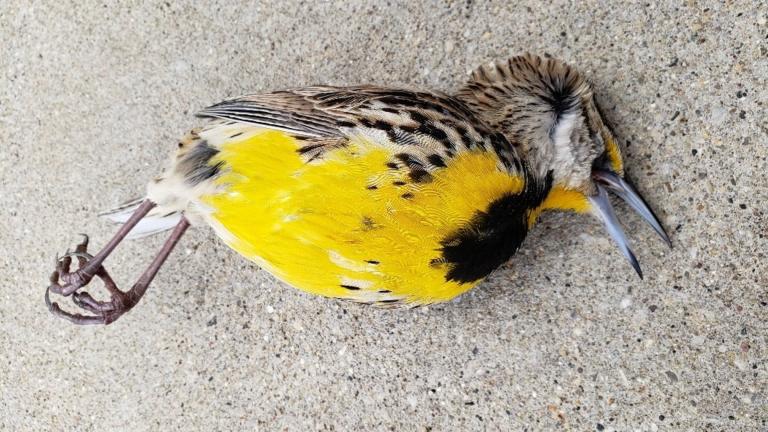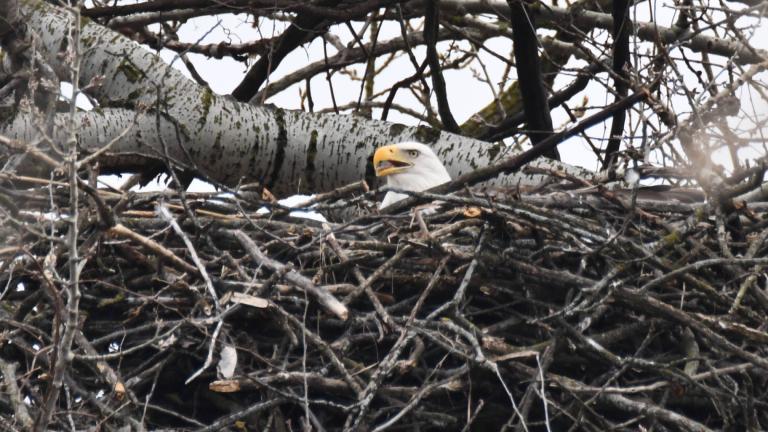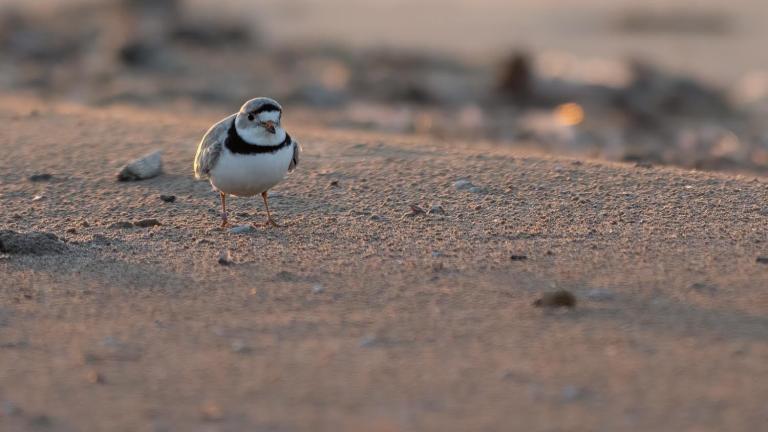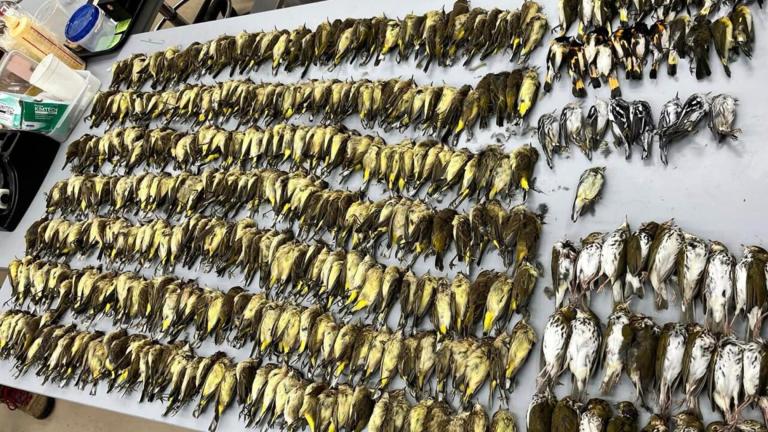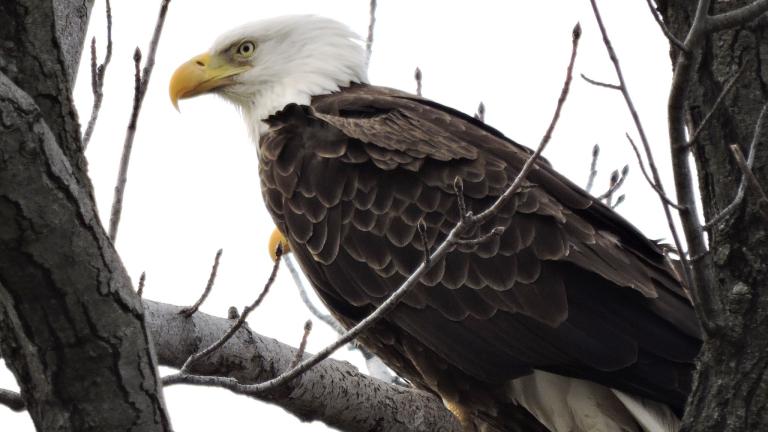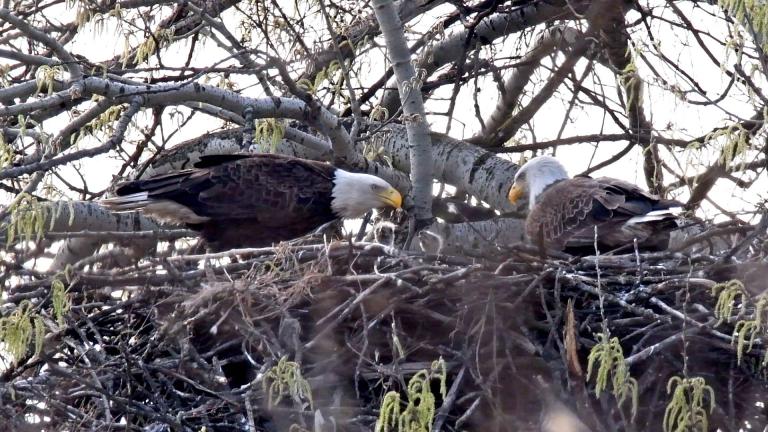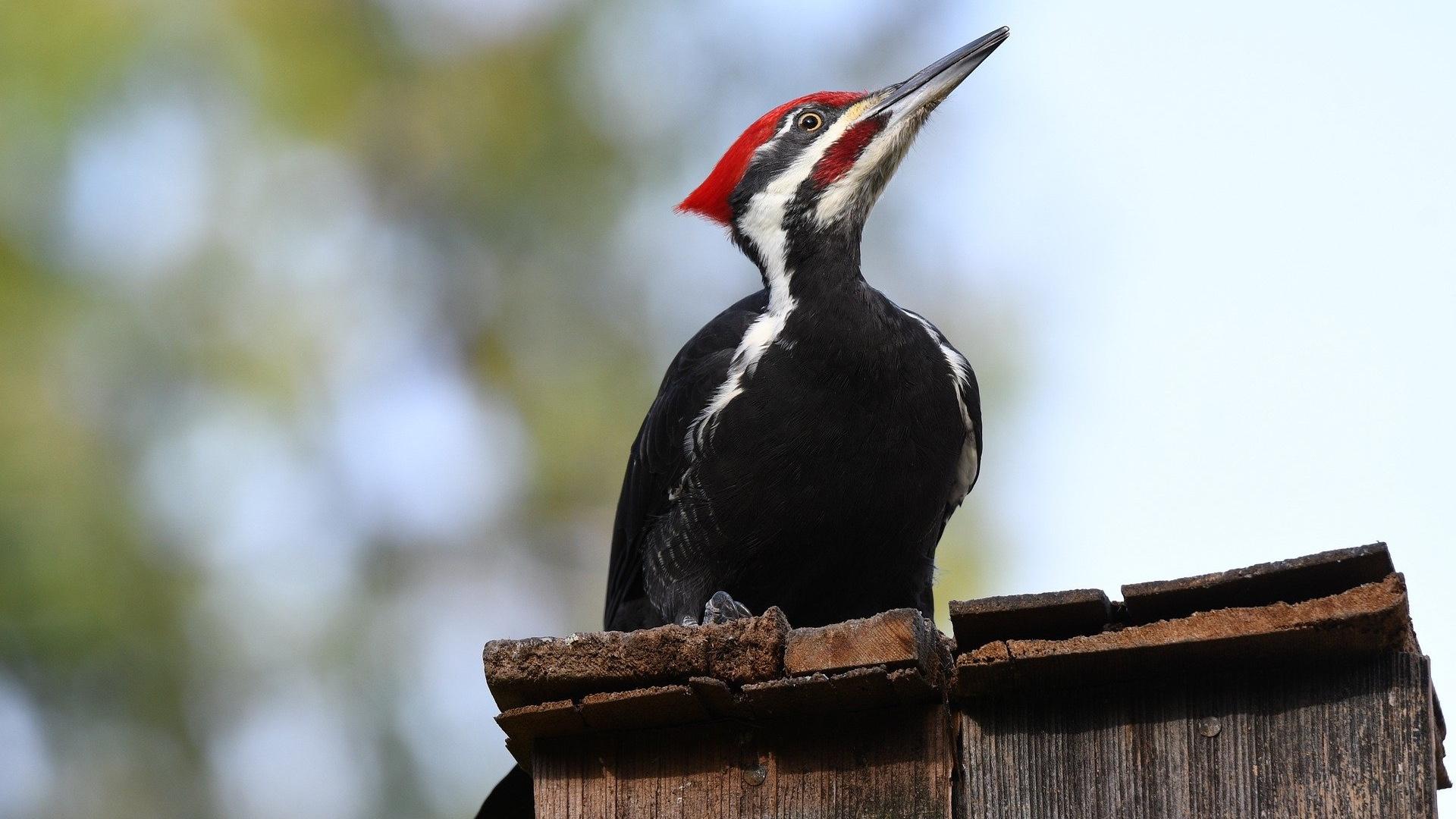 A male pileated woodpecker, distinguished from a female by the red stripe on his cheek. (Veronica Andrews / Pixabay)
A male pileated woodpecker, distinguished from a female by the red stripe on his cheek. (Veronica Andrews / Pixabay)
With its flaming red crest and a call that’s been described as “slightly maniacal,” the pileated woodpecker has often been misidentified as the inspiration for Woody, the best known, albeit fictional, woodpecker of them all.
Now the pileated has its own claim to fame: It’s been named the bird of the year for 2021 by the American Birding Association.
Jeff Gordon, ABA president, made the announcement New Year’s Eve, officially ending the reign of the cedar waxwing, which, Gordon allowed, deserved a better year to represent than 2020. (The waxwing was honored, however, with a poster designed by Chicago artist Tony Fitzpatrick.)
The choice of the pileated, one of the biggest forest birds of North America, is particularly suited for our times, Gordon said, as an emblem both of nature’s wildness and its adaptability — a bird of the woods that’s increasingly coming into our backyards.
The pileated woodpecker is a year-round resident of Illinois, more commonly found in the heavily forested southern parts of the state than the north, according to the Illinois Natural History Survey.
The bird requires large, standing dead trees or downed wood, and drills holes that are more like craters to get at its primary source of food — carpenter ants.
With the loss of old-growth forests, Illinois’ pileated population began to dwindle in the late 1800s, but rebounded in the 1920s as second-growth timber matured, according to the Natural History Survey.
A new twist to the pileated tale has brought the woodpecker closer to Chicago than ever in recent memory. The decimation of the region’s ash trees by the emerald ash borer has created a wealth of habitat for the pileated, as reported by the Chicago Tribune in 2016.
For birding newcomers hoping to catch a glimpse of the bird of the year, here’s what to look for: Pileated woodpeckers are about the size of a crow and can be ID’d not only by the aforementioned bright red crest but by the bold black-and-white stripes on their face and neck. Males of the species have a red stripe on the cheek. In flight, the bird reveals extensive white underwings, according to the Cornell Lab of Ornithology.
They prefer bottomland forest habitat but have been known to visit partially wooded suburbs.
Pileated woodpeckers have been seen at several Cook County Forest Preserves: McClaughry Springs, Thatcher Woods, Sand Ridge Nature Center, Little Red Schoolhouse Nature Center, Sagawau Environmental Learning Center, Miller Meadows, Salt Creek, Paul Douglas, Busse Woods and Spring Creek.
The birds also frequent Goodenow Grove Nature Preserve, Hickory Creek Preserve and Messenger Woods in Will County. In DuPage County, head to Blackwell, Waterfall Glen, Wood Ridge and West DuPage Woods forest preserves.
The Illinois Natural History Survey cites Beall Woods State Park (home to some of the only remaining virgin timber in the U.S. east of the Mississippi River) and the Cache River State Natural Area as some of the best places in the state for woodpecker watching. (The state champion bald cypress also can be found at Cache River.)
While the ABA’s announcement was roundly applauded in birding circles, there is a tiny controversy surrounding the woodpecker: how to pronounce “pileated.”
In a tomayto-tomahto kind of debate, some folks favor PIE-lee-ay-tid, while others opt for PILL-ee-ay-tid. Gordon opted for the former during ABA’s video announcement, but a colleague interjected the alternative.
In a tongue-and-cheek pronunciation guide, Kevin McGowan, co-creator of Cornell Lab’s “All About Birds” site, cleared up the matter. The correct answer is whichever one a person prefers — both are in the dictionary. “Lighten up,” McGowan wrote. “They’re just birds, for goodness sakes, and they don’t care what you call them.”
In case you missed it, the 2021 ABA Bird of the Year is the Pileated Woodpecker with cover art by Juan Travieso! pic.twitter.com/nnyYTmIKEC
— Amer. Birding Assoc. (@ABA) January 1, 2021
Days ago I tweeted about this guy and now it’s the @ABA 2021 Bird of the Year let’s gooooo https://t.co/MNPyP588Bj pic.twitter.com/eGFXqgIiV2
— Ayem (@Aidan_Mutschler) January 1, 2021
For our first Bird of the Week of 2021, we're highlighting @aba's inspired choice for Bird of the Year: the Pileated Woodpecker. With a hefty bill, flaming crest, and slightly maniacal call, these birds are a mixture of beautiful and awe-inspiring. https://t.co/Uk4AJGBnaD
— Cornell Lab (@CornellBirds) January 2, 2021
Pileated woodpecker. #Forest Preserves of #CookCounty #Illinois @FPDCC Sauk Woods FP@chicago_birder @Openlands @IllinoisAudubon pic.twitter.com/86dkQrv5SF
— David J Zaber (@DavidZaber) April 15, 2020
Contact Patty Wetli: @pattywetli | (773) 509-5623 | [email protected]

